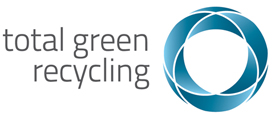Not all recycling is equal. Though the term is often thrown around like it is and as if it is the catch-all fix to the waste problem.
Closed Loop Recycling
Closed Loop recycling means we recycle a product and keep its material properties. It can be recycled back into the same product. Glass bottles for example. Throughout many cycles of extraction, production, use, and recycling, glass still maintains its quality. Aluminium cans are the poster child of closed loop recycling. Aluminium is a material that can go through the recycling process over and over without degrading or losing its desirable properties.

This is the definition that people assume covers most recycling. If the products we buy are recyclable, it’s ok. We’re not creating waste, it’s staying within the loop. However closed loop recycling isn’t as common as people assume it is. Most recycling is actually “open loop recycling”.
Open Loop Recycling
Open loop recycling means that we recycle the product and return it to the industry in a different form. This can also be called down-cycling, or reprocessing. The material loses value through the recycling process, and can’t be reused in the same way.

Recycled steel from a car is an example of open loop recycling. While steel itself is 100% recyclable, through the recovery process the steel from a car can become contaminated with copper or tin. Only a certain amount of contamination is acceptable in a car, so only a small amount of recycled steel can be used in a new car. The rest is used by other industries, such as the construction industry.
Down-cycling is the process where the recycled material is of lower quality and functionality than the original material.

There are so many examples of open loop recycling, with a sliding scale on how down-cycled it becomes. Although it is admirable on face value that a lot of clothing brands are using recycled plastic in their designs, making clothes out of plastic is another example of down-cycling. By filling our clothes with plastic we’re just creating a new kind of waste. One that is potentially harder to deal with.

Both closed and open loop recycling have their place. Closed loop means we’re keeping materials at their highest value. However not all recycling processes are able to do this, and open loop recycling is the next best thing. Trickle down recycling and still better than landfill.
Just because it didn’t get recycled into its original product, doesn’t mean it can’t have a long useful life.

Greenwashing the recycling world
Recycled product does not currently meet the needs of global manufacturing. Virgin materials are still required to fill the gap. We want to buy sustainable products, and brands are attempting to meet that demand. The industry is changing in so many positive ways. With repairability indexes, energy ratings, and new electronics being made from recycled materials. However it’s still easy to greenwash those products. Don’t let the buzzwords take away our responsibility as consumers.
Let’s use plastic as an example. A lot of manufacturers are using recycled plastic, once recycled material is part of the creation of a product it’s easy to claim sustainability. Dell for example says their computers are “made with closed loop recycled plastic”. It’s an exciting thing to read when we want to buy a computer. If we buy a new computer made out of recycled material, it has less of an impact on the environment. However by scrolling down, Dell states recycled plastic only makes up 30% of the plastic used. 70% of it was still virgin plastic.
Dell is actually a company who is focussed on their sustainability through product design. Check out Concept Luna here: Concept Luna. We’re not having a go at companies who are pushing themselves to become sustainable. Simply highlighting the very real issue of buzzwords, and statistics making it seem like our consumption isn’t having an impact.
As usual our motto is to ask yourself why before you buy, and lower the need for recycling by lowering our consumption.
To learn more about the different aspects of recycling and waste management read our blog on the Waste Hierarchy.
